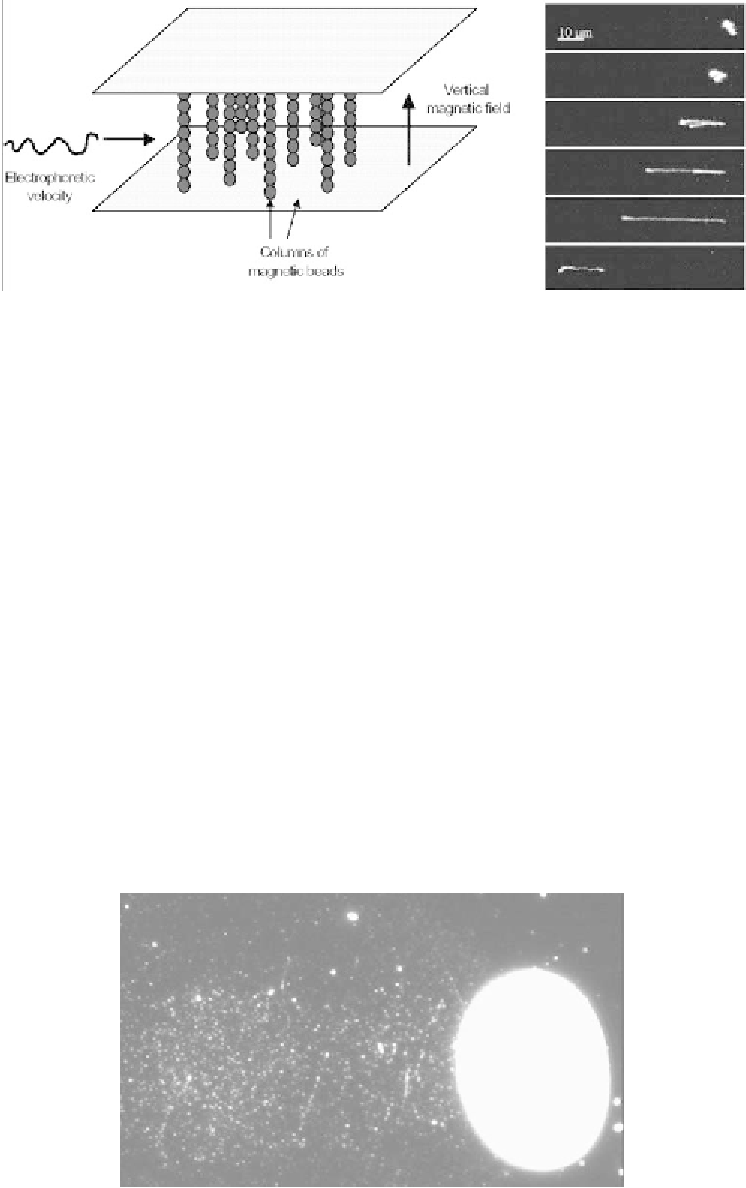Biomedical Engineering Reference
In-Depth Information
Figure 9.33
Left: schematic view of a DNA separator constituted by magnetic beads aligned in
vertical columns. (
From
[25].) Right: a long DNA strand moves from right to left; when meeting an
obstacle, it stretches on both sides of the obstacle and the longer side slowly drags out all the DNA
strand. DNA motion restarts until the next obstacle. (Courtesy J.L. Viovy, Institut Curie.)
9.12 Magnetic Fluids
9.12.1 Introduction
We have seen that when the concentration of magnetic micro- or nanoparticles in a
carrier fluid is sufficient and the magnetic field uniform, magnetic chains will form.
If the external field is not uniform, aggregates will form (Figure 9.34).
But what if the particles are maintained dispersed by the use of surfactants or
electric repulsion? In such a case, one obtains a magnetic fluid—or a ferrofluid—
which is a coherent fluid formed by a stable suspension of magnetic nanoparticles
(grains of magnetite Fe
3
O
4
or maghemite) in a carrier fluid (Figure 9.35, right).
There are two types of ferrofluids depending on their base (carrier fluid): the base
may be organic and the particles are dispersed by surfactants, or the base may be
polar and the particles are dispersed by electric charges (Figure 9.35, left). Note
that no natural magnetic fluid exists. Liquid metals are not magnetic because their
liquefaction temperature is above Curie temperature.
Figure 9.34
Image of an aggregate of magnetic microparticles (Dynal 1
μ
m).


